Hamas is effectively back in control on the streets of Gaza
The US-designated terrorist group remains the dominant power in the Palestinian territory as ceasefire highlights who controls the streets of Gaza.
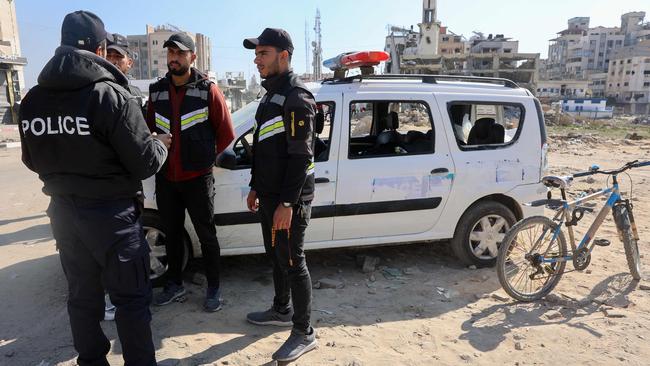
After Israeli troops stood down when a ceasefire came into effect in the Gaza Strip, Hamas began sending thousands of its forces onto the streets to establish control.
The deployment – envisioned by the agreement that pauses the fighting while the combatants exchange hostages for prisoners – highlights how the US-designated terrorist group remains the dominant power in the territory.
Israel hasn’t been able to destroy the group or empower an alternative.
Hamas punctuated its authority Sunday by parading armed and uniformed militants through the streets flashing V-signs to cheering crowds.
When Hamas transferred the first Israeli hostages to the Red Cross, Arab mediators said they could see fighters from Hamas’s core Nukhba Force unit clad in full military gear and armed.
The open show of force after months of being pushed underground was a signal that aid groups and governments will need to co-operate with Hamas as reconstruction efforts get under way in the coming weeks – an outcome Israel has hoped to prevent.
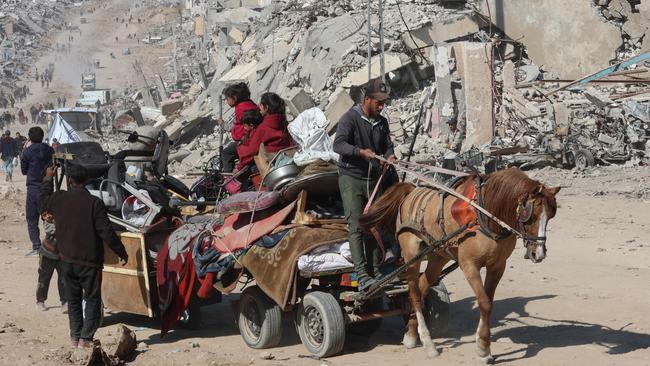
“The Hamas presence on the ground armed is a slap in the face to the Israeli government and army,” said Gershon Baskin, a former Israeli hostage negotiator who is now Middle East director for the diplomacy advocacy group International Communities Organisation.
“It highlights that Israel’s goals for the war were never achievable.”
The fragile truce between Israel and Hamas pauses a war that is among the deadliest in modern Middle Eastern history, one that has reduced much of Gaza to rubble and killed about 47,000 people in the enclave following Hamas’s October 7, 2023, attack on Israel, which killed about 1200 people and left another 250 held hostage.
If it holds, the ceasefire could ease tensions in the region after more than a year of a conflict that drew in the US and Iran and its allied militias across the Middle East.
But it also raises substantial questions about how Gaza will be governed after the fighting.
During the 15-month conflict, Israel has battered Hamas in one part of Gaza before moving on to fight in other areas, leaving behind vacuums that have turned lawless as militants tried to reconstitute their forces and criminal gangs battled for control.
The lack of order snarled aid deliveries and created new threats for ordinary Palestinians already struggling with the fighting and deprivation.
The US and Israel’s own security establishment pressed Prime Minister Benjamin Netanyahu to come up with a plan for Gaza’s post-war governance, but so far he hasn’t done so.
The Palestinian Authority, which oversees much of the occupied West Bank, has said it is ready for the job, but Netanyahu, opposed to a two-state solution, doesn’t want it involved. Hamas has stepped into the breach.
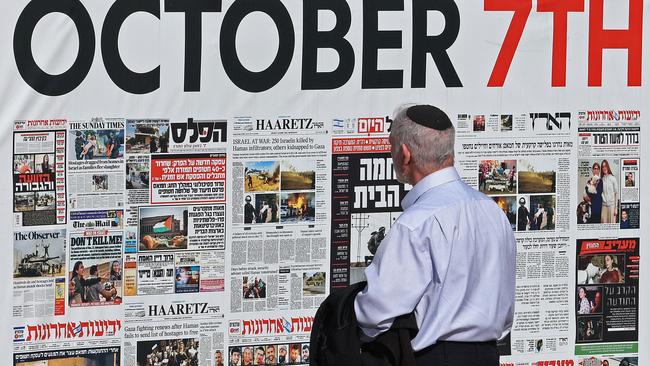
Israeli Foreign Minister Gideon Sa’ar said Sunday that the current deal is only for a temporary ceasefire and that a permanent end to the war would depend on Hamas abdicating power in later stages of the negotiations.
He said Israel has yet to fulfil its war aims of dismantling Hamas’s military and governing capabilities, and indicated it is prepared to re-displace Palestinians if hostilities are renewed.
“There is no future of peace, stability and security for both sides if Hamas stays in power,” Sa’ar said.
Under the ceasefire agreement struck last week, police overseen by Hamas will assume responsibility for managing law and order among Palestinians generally.
They will also maintain the movement of displaced Palestinians in the southern part of Gaza back to their homes in the north.
About 90 per cent of Gaza’s population has been internally displaced.
Hamas police forces won’t be allowed near Israeli troops or enter the buffer zones near the border with Israel, according to security protocols agreed by Hamas, Israel and the mediators of the deal.
The police officers can carry weapons only when necessary and would be monitored by teams of Egyptian and other Arab observers, who are to be stationed in at least 13 locations across Gaza.
Egypt, along with Qatar and the US, brokered the deal.
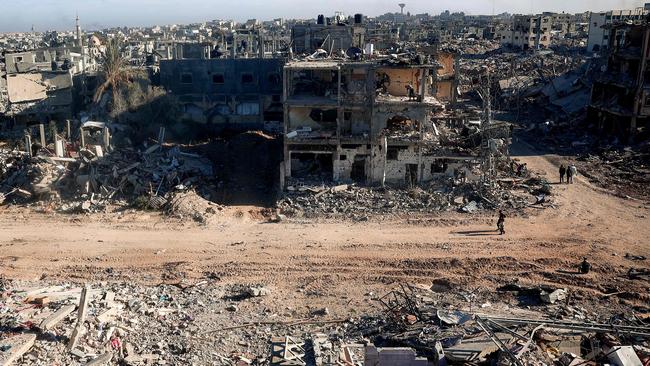
Under that agreement, the Hamas forces are supposed to wear distinct blue uniforms, and their numbers will vary based on the population densities of different areas.
The mere presence of armed militants on the streets of Gaza doesn’t violate the ceasefire deal, but any attempt to rearm or threaten Israelis would, an Israeli security official said.
A major point in the first phase of the ceasefire revolves around significantly increasing the amount of aid entering Gaza, with Hamas patrolling major routes and accompanying aid trucks and distributors alongside the United Nations.
Looting of aid convoys by criminal gangs within Gaza has been rampant during the war. Increasing supplies will help reduce this by making the commodities less valuable to thieves, and a police presence will make those items less accessible to criminals.
“There have been security forces out on the streets, and they are more visible around the main junctions, which is something they have not been able to do without the risk of being killed for several months,” Sam Rose, a senior official with the UN Relief and Works Agency, the largest aid group in Gaza, said in a phone interview from the enclave.
The amount of aid that entered Gaza on Sunday is more than what humanitarian groups could often bring in throughout an entire week during the fighting, Rose said.
Frustration with Hamas in Gaza has grown as the war dragged on.
On social media, Palestinians urged Hamas to accept a deal even if it meant giving up on some of its demands.
Community leaders, business people and the heads of prominent families made a number of appeals in recent weeks for the Palestinian Authority to take over the enclave again.
Current and former Israeli officials have floated a number of plans for governing the Gaza Strip after the fighting ends.
Most involve some form of Arab or multinational force working with representatives of Palestinians on the ground.
Top Israeli defence officials repeatedly said the only real alternative is the Palestinian Authority.
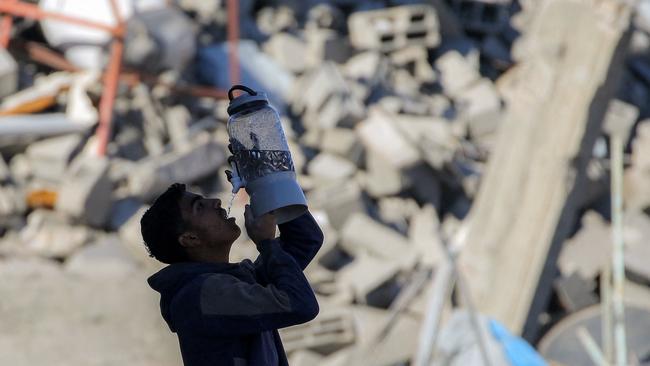
Former US Secretary of State Antony Blinken laid out a plan last week that would have the Palestinian Authority administer and ultimately secure the Gaza Strip.
The authority, which polling shows is unpopular in the West Bank, ran the Gaza Strip until being ousted by Hamas in 2007.
It recently has been trying to assert a role for itself in a new power struggle with Hamas.
The rivalry has recently turned violent at times. Hamas detained Palestinian Authority officials in Gaza last year, and the authority recently stepped up a campaign to go after Hamas militants in the West Bank.
There are, however, some signs of co-operation.
The Islamist group agreed to relinquish its control of the important Rafah border crossing between Gaza and Egypt, allowing Palestinian Authority officials to operate it alongside Egypt and the European Union.
For now, however, Hamas has the monopoly of force.
Israel believed that Hamas had up to 30,000 fighters arranged into 24 battalions before the war in a structure that loosely resembled a state military.
The Israeli military says it has killed about 17,000 fighters – including leader Yahya Sinwar – and detained thousands more.
Hamas hasn’t said how many fighters it has lost, but it has been reorganising and recruiting under the command of Sinwar’s younger brother, Mohammed.
Hamas is also believed by Israel to have several battalions left in areas of central Gaza where Israel’s military was less active than in other areas of the enclave.
“I am not convinced that Hamas believes they could return to governing Gaza, but for now there is certainly no one on the ground except them that could take over,” Baskin said.
-Dov Lieber contributed to this article.
Wall Street Journal





To join the conversation, please log in. Don't have an account? Register
Join the conversation, you are commenting as Logout